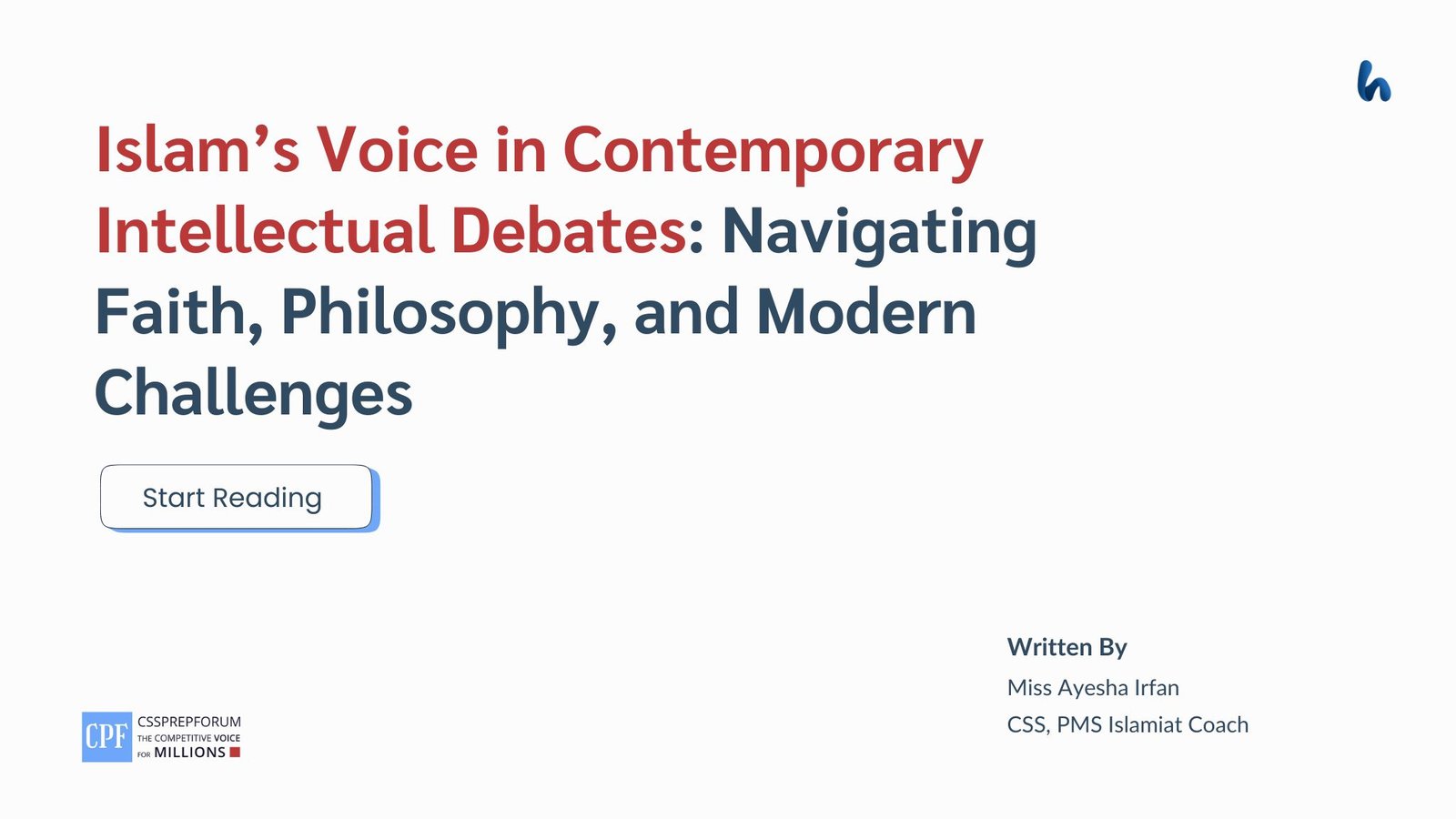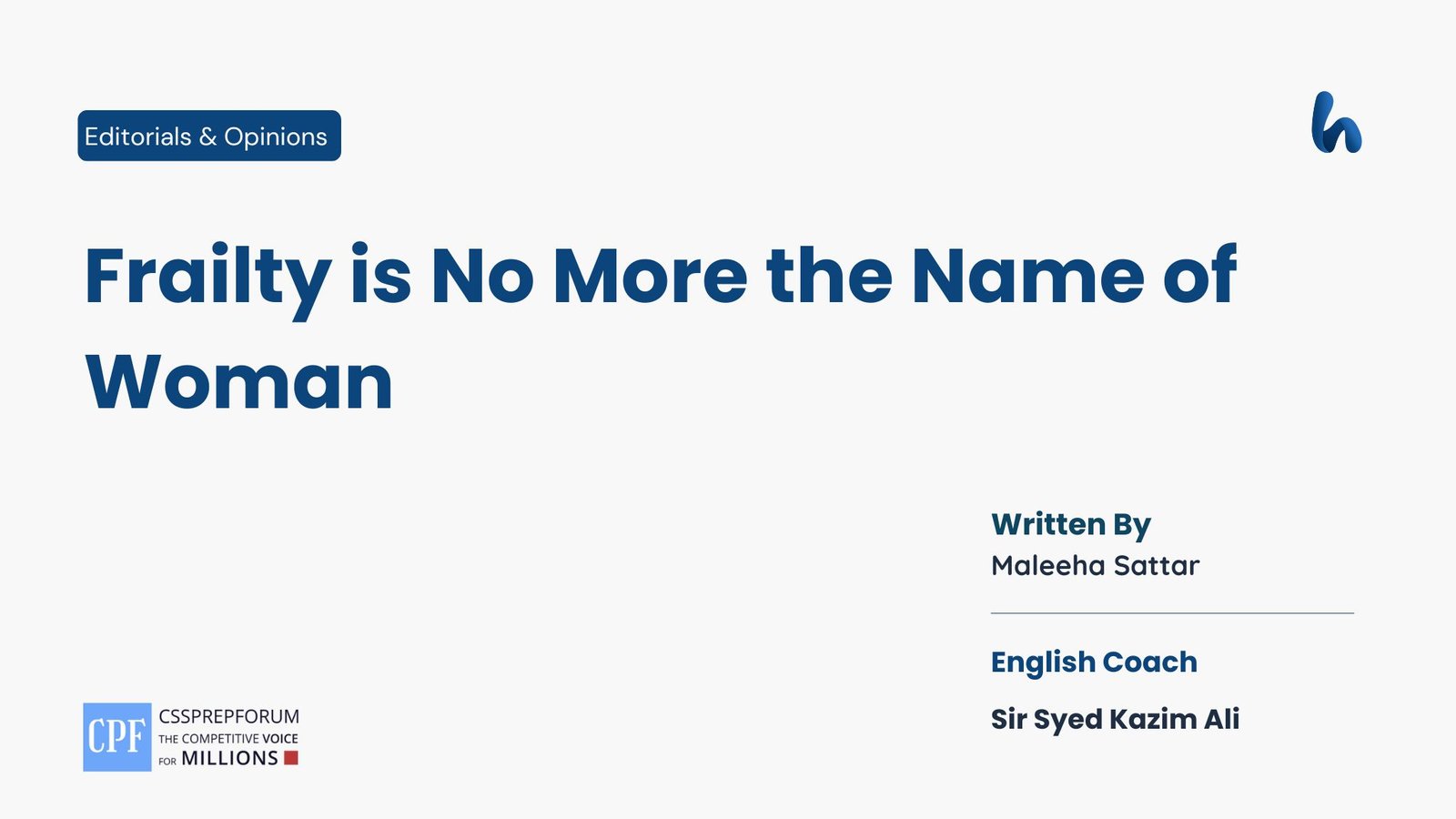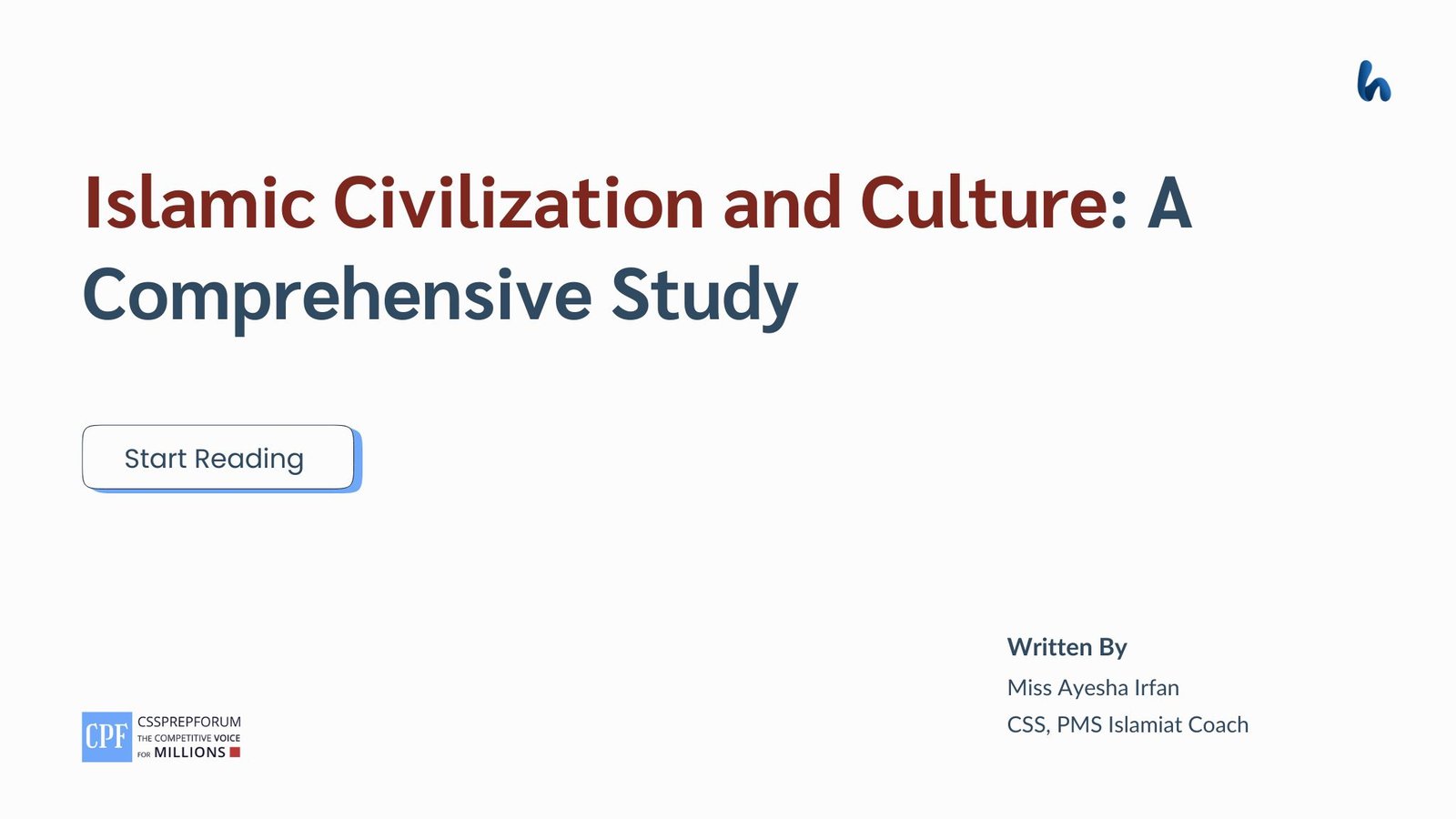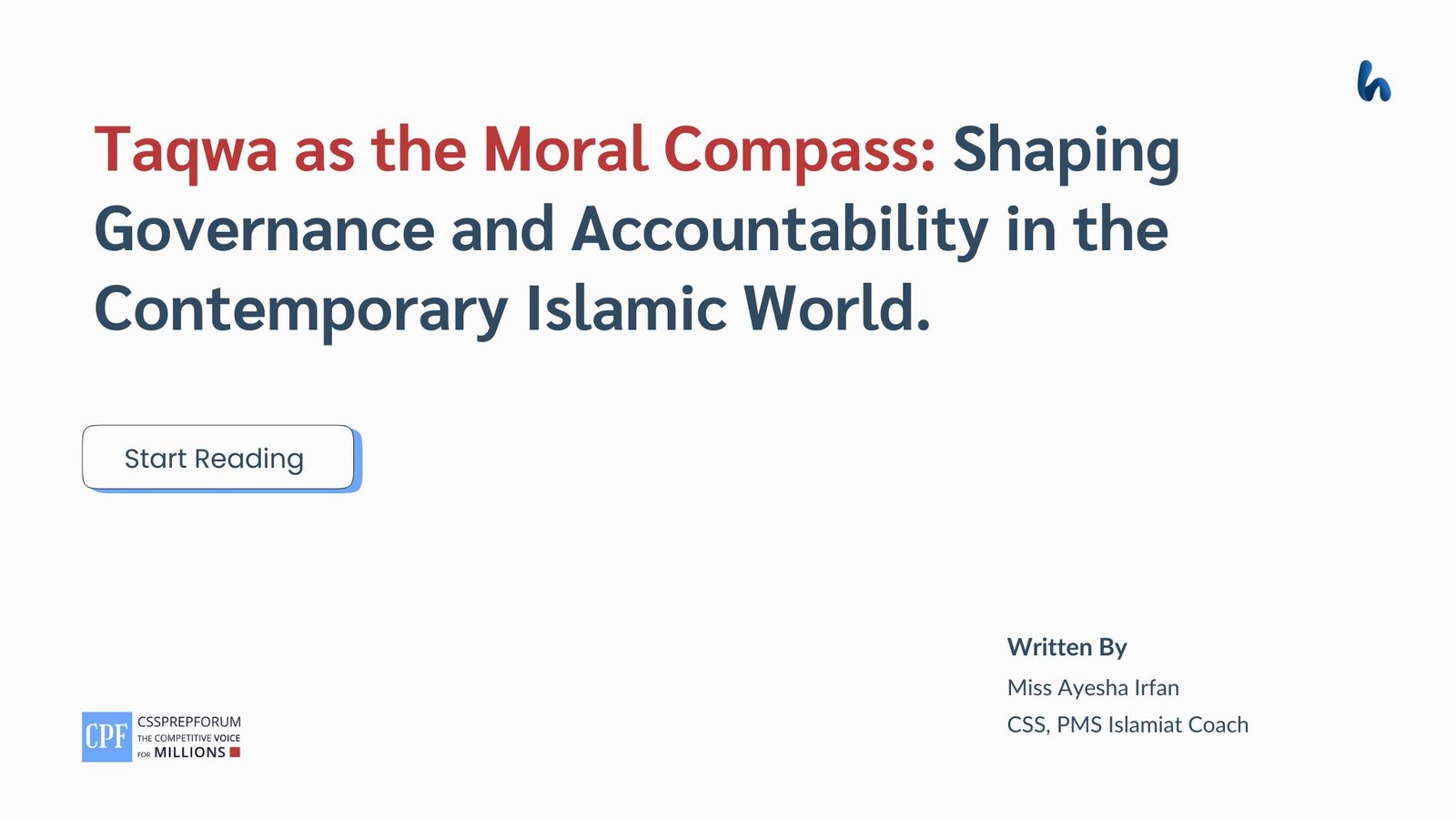CSS 2017 Solved Current Affairs Past Paper | The Security Conditions of Balochistan and CPEC
The following question of CSS Current Affairs 2017 is solved by Sir Ammar Hashmi, the best Current Affairs Coach, on the guided pattern of Sir Syed Kazim Ali, which he taught to his students, scoring the highest marks in compulsory subjects for years. This solved past paper question is uploaded to help aspirants understand how to crack a topic or question, how to write relevantly, what coherence is, and how to include and connect ideas, opinions, and suggestions to score the maximum.

Question Breakdown
The question requires you to suggest strategies for improving security in Balochistan, particularly concerning the China-Pakistan Economic Corridor (CPEC). It also asks you to address how regional powers may attempt to sabotage the project. Essentially, it’s about proposing security measures and analyzing external threats to CPEC in the region.
Outline
1-Introduction
2-Significance of Baluchistan in the CPEC
3-Measures to Improve Security in Balochistan
- ✓ Increased Military and Security Presence
- ✓ Intelligence Sharing and Counter-Terrorism Efforts
- ✓ Improved border security and its management
- ✓ Social and Economic Development Programs
- ✓ Reconciliation and Political Dialogue
- ✓ Strengthening Diplomatic Efforts
4-Role of Regional Powers in Sabotaging CPEC
- ✓ India
- ✓ Iran
- ✓ Afghanistan
5-Critical Analysis
6-Conclusion

Answer to the Question
Introduction
The Belt and Road Initiative (BRI) is a Chinese economic project, also referred to as the New Silk Road; it is one of the most ambitious projects encompassing infrastructure that has ever been conceived by any of the developed nations. It was launched in 2013 under the presidency of Xi Jinping. Initially, the vast collection of investment and development initiatives was devised to link East Asia and Europe through infrastructure. Belt and Road Initiative (BRI) is a Chinese economic project, also referred to as the New Silk Road; it is one of the most ambitious projects encompassing infrastructure that has ever been conceived by any. It has significantly broadened China’s political and economic influence. Balochistan is a pivotal point as it enhances China’s influence in South Asia, and its security is important to maintain the integrity of CPEC (one of the key projects of BRI). However, with significance, Balochistan also brings numerous challenges. It has long-standing problems of militancy, insurgency, and political instability. So, the security of Balochistan demands a comprehensive approach that combines diplomatic engagement with regional nations to counteract regional sabotage.
Significance of Baluchistan in the CPEC
Baluchistan region holds an essential position in the China-Pakistan Economic Corridor (CPEC) as far as geopolitical, social, economic, and environmental aspects are concerned. From a geographical point of view, it connects the Arabian Sea down to western China, making it a passage to Gwadar Port, which is the most attractive point of CPEC. This deep-sea port helps China to get direct access to the Indian Ocean, which also minimizes the opportunity to use a longer shipping line passing through the Malaccan Strait. Balochistan plays a key role as it establishes China’s hegemony in South Asia and ensures the safety of the project. However, the province works significantly, but it also comes with a lot of concerns, such as Balochistan security. It has long-drawn issues of militancy, insurgency, and political restlessness. Various separatist movements in the province believe that CPEC is somehow a threat to the independence of their region as the benefits of various developmental projects of CPEC may not reach the local people, and they will have to suffer biasness from the government of Pakistan.
Measures to Improve Security in Balochistan
- ✓ Increased Military and Security Presence:
An increase in the security presence in Balochistan is necessary for the security of CPEC, which may be in the form of strategies and their deployment with or without some effectiveness. One strategy is to form the Special Security Division SSD) and Task Force-88 (security forces) primarily for the security of CPEC and all its associated projects. For instance, over 15000 personnel are serving in SSD, particularly to guard infrastructure, including (under CPEC) and Chinese people working in Pakistan. In the same way, the establishment of Task Force-88, inclusive of Navy and Marine forces, was used to safeguard the Gwadar Port and its channels against threats existing in the seas. The enhancement of paramilitary forces such as the Frontier Corps (FC) is also crucial to help quell disturbances across Balochistan. Both these operations and, more importantly, conspicuous deployment in key areas of CPEC Routes have already aided in claiming the military’s role in bringing down the number of attacks by 20% in 2023 as compared to prior years. Improving the conventional security situation of the province shall thus support the better realization of secure CPEC initiatives.
- ✓ Intelligence Sharing and Counter-Terrorism Efforts:
Countering terrorism needs a multifaceted approach that facilitates cooperation between military, paramilitary and certain intelligence agencies. Interlinking the Inter-Services Intelligence (ISI), Military Intelligence (MI), and civilian law enforcement agencies like the Counter-Terrorism Department (CTD), Pakistan has made significant progress. An example of this coordination is Operation Radd-ul-Fasaad, which was launched in 2017. It continued to eliminate residual terrorist elements and targeted their networks across Balochistan and Pakistan. Intelligence operations of 2023 in Balochistan resulted in the arrest of 400 suspects linked to extremist groups, and improved intelligence sharing of military and civilian agencies made these operations successful. In addition to this, the National Counter Terrorism Authority (NACTA) is working to combine data from multiple sources to create a unified database that can track terrorist movements and threats. These measures have collectively contributed up till now and need a serious implementation to a more secure environment that will benefit the ongoing development and operations of CPEC projects in the region.
- ✓ Improved Border Security and its Management:
Recently, Pakistan has fenced its Pak-Afghan border, particularly the areas of Balochistan, which has always been a major infiltration route for militants and refugees. In 2023, 90% of the 2600-kilometer-long border has been fenced, with surveillance cameras, watchtowers, and barbed wires to monitor movement. This effort has reduced a considerable number of illegal crossings and smuggling activities. However, loopholes still exist that continue to pose challenges, like, e.g., the vast and porous nature of the terrain, due to which surveillance is difficult. Another significant loophole is the absence of a unified command structure; in other words, there is a lack of coordination among agencies involved in border security, which include the Frontier Corps, local police, and customs. Additionally, corruption, the most highlighted issue, also undermines broader security efforts. To address these problems, increased use of technology, deployment of drones, advanced surveillance systems, and sensors can help cover hard-to-reach areas, and lastly, strengthening inter-agency coordination and regular intelligence meetings can improve response and operational efficiency.
- ✓ Social and Economic Development Programs:
Socio-economic programs mainly focus on improved living conditions, job creation, and community engagement activities which can contribute to a more stable environment. One key approach is investments in basic services such as healthcare, sanitation, education, and infrastructure. For example, in 2023, CPEC-related projects initiated several schools and health facilities, which benefited thousands of locals. Another initiative is the creation of job opportunities by involving local residents in operation and construction roles, which will provide income and stability, reduce economic desperation, and lessen the interest in extremist activities. Such efforts aim to involve local populations in project planning and its proper implementation. This will help to ensure that these developmental projects meet local needs and will create a prosperous environment.
- ✓ Reconciliation and Political Dialogue:
Dialogue engagement with various stakeholders like tribal elders, local leaders and political groups, ad, and political groups dresses the issues of resentment and disenfranchisement that can fuel unrest among residents. A recent example of dialogue efforts to integrate Balochistan in National plans involving the Balochistan government (Balochistan National Party) and the federal government has led to better representation of Baloch interests in policymaking and its implementation. This has increased the allocation of federal investment in the region as per the needs of the people; nearly $2 billion in 2023 was allocated for development projects like education, infrastructure, and healthcare in Balochistan, which fostered a sense of inclusion and economic opportunity. Reconciliation and political dialogue help improve security in the region related to CPEC. It will address political grievances, integrate local perspectives into development plans, and further reduce insurgent activities; these efforts will eventually contribute to more stability and security for CPEC projects.
- ✓ Strengthening Diplomatic Efforts:
Strong diplomatic engagement helps build consensus among neighbors and international stakeholders, which can mitigate the factors contributing to insecurity in the region. One effective approach to improve relations with Iran and Afghanistan that borders with Balochistan. When in 2022, Afghanistan and Pakistan agreed to strengthen border management, which led to the establishment of joint border control mechanisms and contributed to a visible reduction in cross-border militant activities, with a decrease in such incidents by 15% in 2023. Similar is the case with Iran; the two countries in 2023 signed a bilateral agreement to combat insurgent activities and smuggling around borders, which led to increased patrolling and joint operations, contributing to a more secure environment for CPEC projects. United Nations and the Shanghai Cooperation Organization (SCO) also supported these initiatives for regional stability and security.
Role of Regional Powers in Sabotaging CPEC
- ✓ India:
India perceives it as a challenge to its influence in the South Asian region and a threat to its regional and security ambitions. India primarily opposes it because CPEC passes through the Gilgit-Baltistan region of Kashmir, which is an area India claims as its own. In this perspective, India views it as an infringement of its sovereignty and a strategic move by Beijing, whereby the “String of Pearls” strategy encircles India and enhances Chinese influence in the Indian Ocean through strategic locations and ports around India. It also increases Beijing’s naval presence in South Asia, which India takes as a threat to its dominance in the Indian Ocean. India also fears that this could enhance Pakistan’s strategic importance and economic resilience, giving a boost to its development, economy, and infrastructure. India aims to destabilize Balochistan by supporting insurgent groups and funding separatist elements to disrupt construction and demotivate foreign investments. It also tried to counterbalance this corridor by investing in the Chabahar Port in Iran, to create a competing trade route bypassing Pakistan and directly connecting India with Central Asia.
- ✓ Iran:
Iran, as one country in a region, is part of strategic geopolitical and economic rivalry. One of the major areas of competition can be identified between Chabahar and Gwadar Port which have been developed as a connectivity alternative from Iran towards Central Asia through Afghanistan. Tehran’s relations with India provide anti-weights to CPEC as well as regional domination. While it is not deliberately undermining CPEC, the fact is that bolstering its own strategic avenues and alliances indirectly threatens the CPEC’s dominance and capacity. Further, the influence of other political factors at the regional level puts yet another layer of indirect influence. Interaction of Tehran in regional politics, which also includes factions and sects, can lead to unstable security environments, which may possibly disturb the CPEC.
- ✓ Afghanistan:
It is not a regional power but is geographically complicated and does cause much turbulence due to its location and state status. With Iran and Pakistan being two strategic neighbours of Afghanistan the country becomes especially relevant to regional connectivity projects such as CPEC. However, ongoing security issues, sour relations with Pakistan, the presence of militants, and cross-border terrorism can have a direct impact on the CPEC progress. Many militant groups operating close to the Pakistan-Afghanistan border have already been identified as carrying out attacks on CPEC projects in order to foment unrest. Secondly, Kabul has another fold to its diplomacy with Delhi as both cities have their vested interests in balancing Pakistan’s influence in the region. These factors pose ideal risks to the success of the CPEC and compound the problems of the region.
Critical Analysis
The instability of Balochistan is not only due to homegrown rebellions or insurgencies, but they are linked with wider geopolitical shifts. As the situation in the Balochistan province escalates, regional players such as Iran and India use this situation to undermine CPEC, thereby complicating challenging local politics that underlines a major weakness in Balochistan’s security architecture. The passive support to insurgent activities by these regional actors calls for the provision of a better diplomatic strategy that addresses threats and also mitigates external interference. Therefore, the security of Balochistan requires an integrated policy, which includes diplomatic balance among neighboring nations in order to offset regional ‘sabotage’. A purely development-oriented or military-oriented strategy is not enough for the long-term security of the region.
Conclusion
The issue of the security of Balochistan and CPEC requires a multi-faceted approach. Military and security solutions must contain a plan for the short-term defense, which should be additionally accompanied by integrated socio-economic investment and sustainable non-security related solutions. Similarly, political diplomacy with the regional countries and international players is crucial to counter accomplishment to subvert CPEC and its security. The effective strategies that could help in providing a better environment for the sustainability and successful implementation of CPEC in Balochistan will combine security, the economic reform that is relevant to CPEC, and good strategic diplomacy, which is crucial in designing a stable environment for CPEC implementation in Balochistan.

CSS Solved Past Papers’ Essays
Looking for the last ten years of CSS and PMS Solved Essays and want to know how Sir Kazim’s students write and score the highest marks in the essays’ papers? Then, click on the CSS Solved Essays to start reading them.
CSS Solved Essays
CSS Solved Islamiyat Past Papers
Want to read the last ten years’ Islamiyat Solved Past Papers to learn how to attempt them and to score high? Let’s click on the link below to read them all freely. All past papers have been solved by Pakistan’s top CSS Islamiyat coach having the highest score of their students.
CSS Solved Islamiyat
CSS Solved General Science & Ability Past Papers
Want to read the last ten years’ General Science & Ability Solved Past Papers to learn how to attempt them and to score high? Let’s click on the link below to read them all freely. All past papers have been solved by Pakistan’s top CSS GSA coach having the highest score of their students.
CSS Solved General Science & Ability












